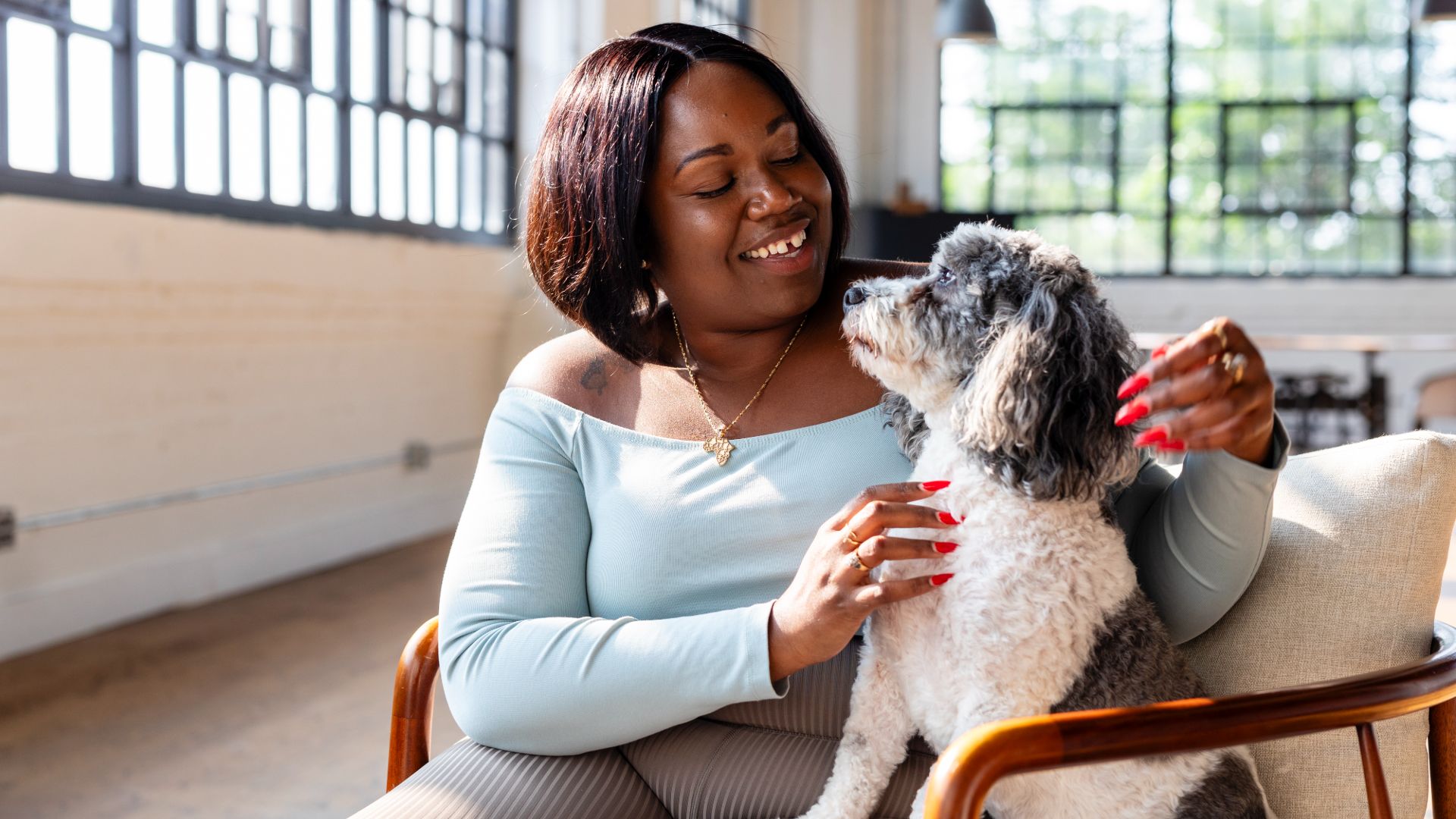
Any dog can train as a therapy dog, but the best therapy dog breeds are naturally calm dog breeds, intelligent and up to the task of lending a helping paw.
Many scientific studies how shown how good pets are for people. They help reduce stress and anxiety and provide calm reassurance when we feel overwhelmed. According to a recent study published in Pets journal, regular access to therapy dogs improves college students’ mental health.
Dogs in particular help to reduce feelings of loneliness and encourage their owners to get regular exercise and social contact. Further research collated by HABRI, shows that pets are particularly beneficial for children and young adults, as they teach responsibility and empathy and offer non-judgemental support. Dogs aren’t called ‘man’s best friend’ for nothing!
While any pet can help any person, official therapy dogs have had special training to help them offer support and comfort to people in hospital, nursing homes, schools or hospices. They’re required to be sociable, gentle, friendly and reliable so that they can do a great job. We’ve listed 12 of the best therapy dog breeds below.
Best therapy dog breeds
1. Labrador Retriever
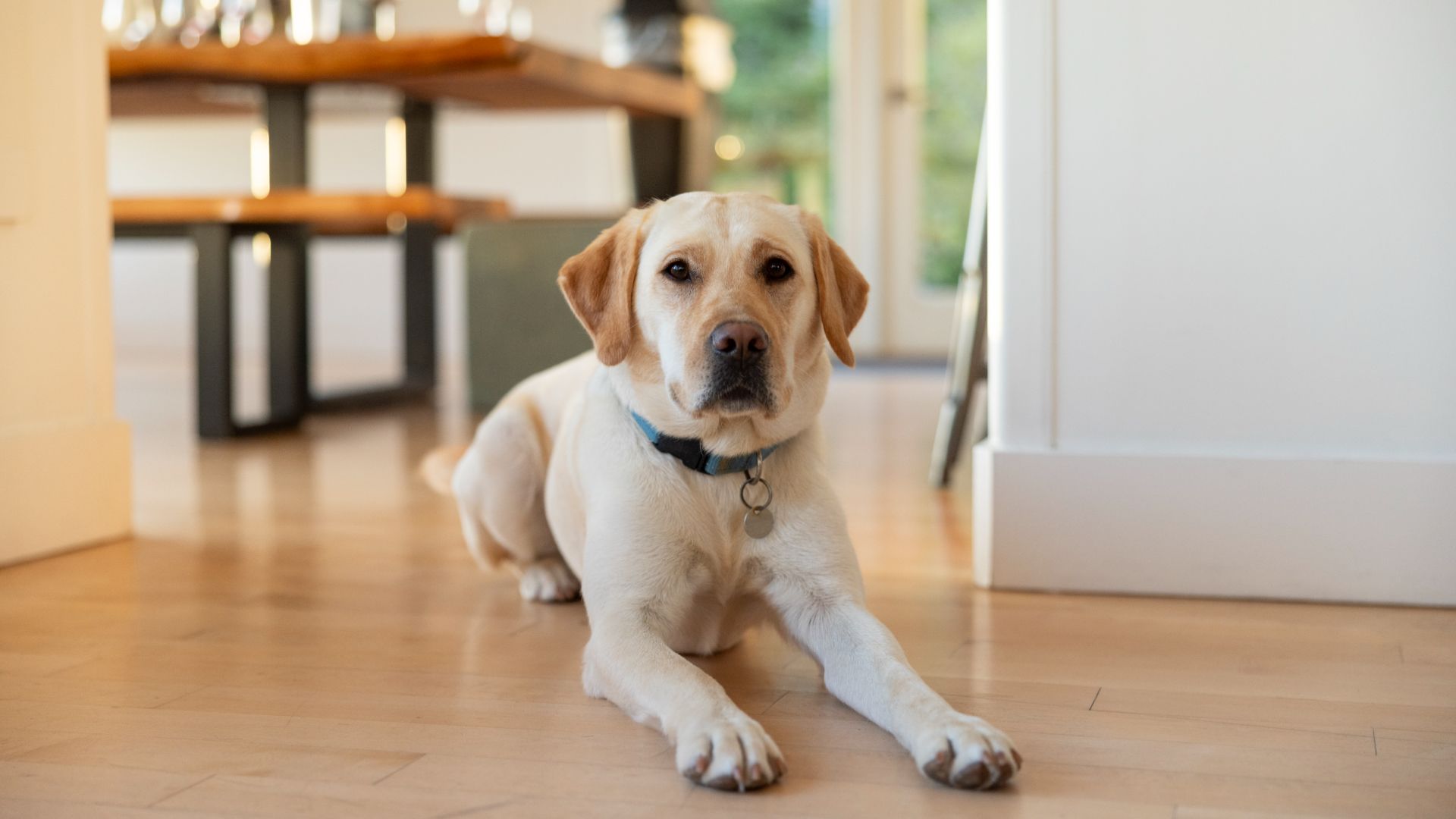
This retrieving breed was originally used for picking up game, Labrador Retrievers are bright, friendly, sociable dogs who love a job to do. They’re easy to train and normally love people. Their calm temperament means they’re happy sitting still for long periods, but they do love a lively game or two when they’re allowed.
Labradors, being gundogs, are highly motivated to fetch and carry. They’re also one of the smartest dog breeds, and their intelligence and trainability makes them able to spot changes in mood and act upon them, perhaps by fetching a comfort item for someone experiencing an anxiety attack.
2. Golden retriever

Another gundog breed, golden retrievers are normally gorgeous, goofy clowns who love nothing more than people and cuddles (and food!). Although they’re big dogs, they’re respectful of the vulnerable and their big, soppy grins make them look friendly and approachable.
As well as being one of the best service dog breeds, goldens share many of the Labrador's positive traits. For example, they are also keen to fetch and carry (the clue is in the name!) and are extremely trainable and eager to please. This, with their naturally gentle demeanor and aptitude for responding to human emotions, makes them one of the best therapy dog breeds.
3. Poodle
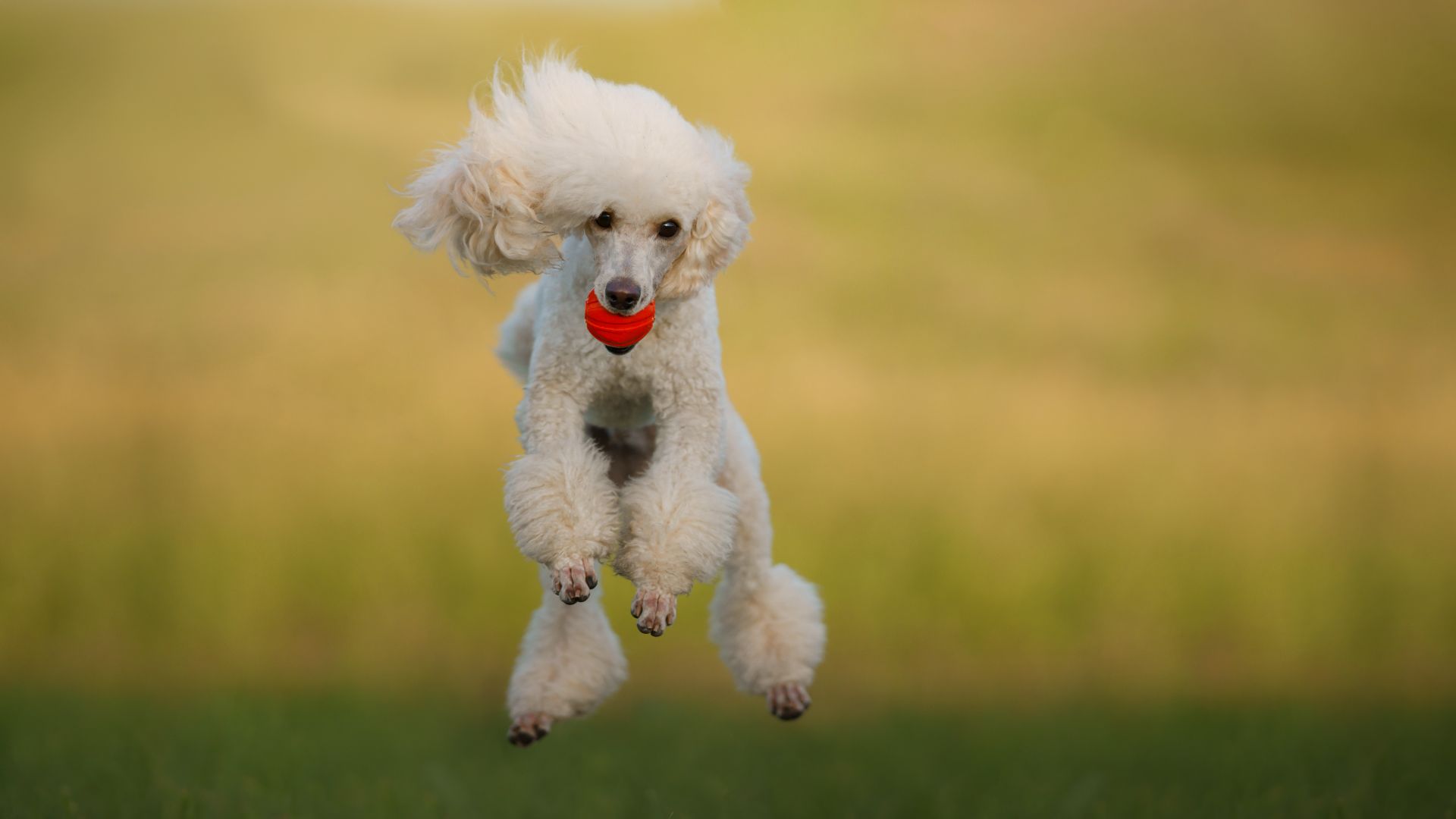
Believe it or not, poodles were originally gun dogs too! They were originally a German breed, bred to retrieve for duck hunters, and their dense coat is waterproof.
Poodles are another highly intelligent dog breed and sensitive to human emotions, whether constant or in flux.
They come in a variety of sizes and are also a hypoallergenic dog breed. In other words, they don’t shed, which means people with canine allergies may experience reduced symptoms, or perhaps none at all.
4. Bichon frise
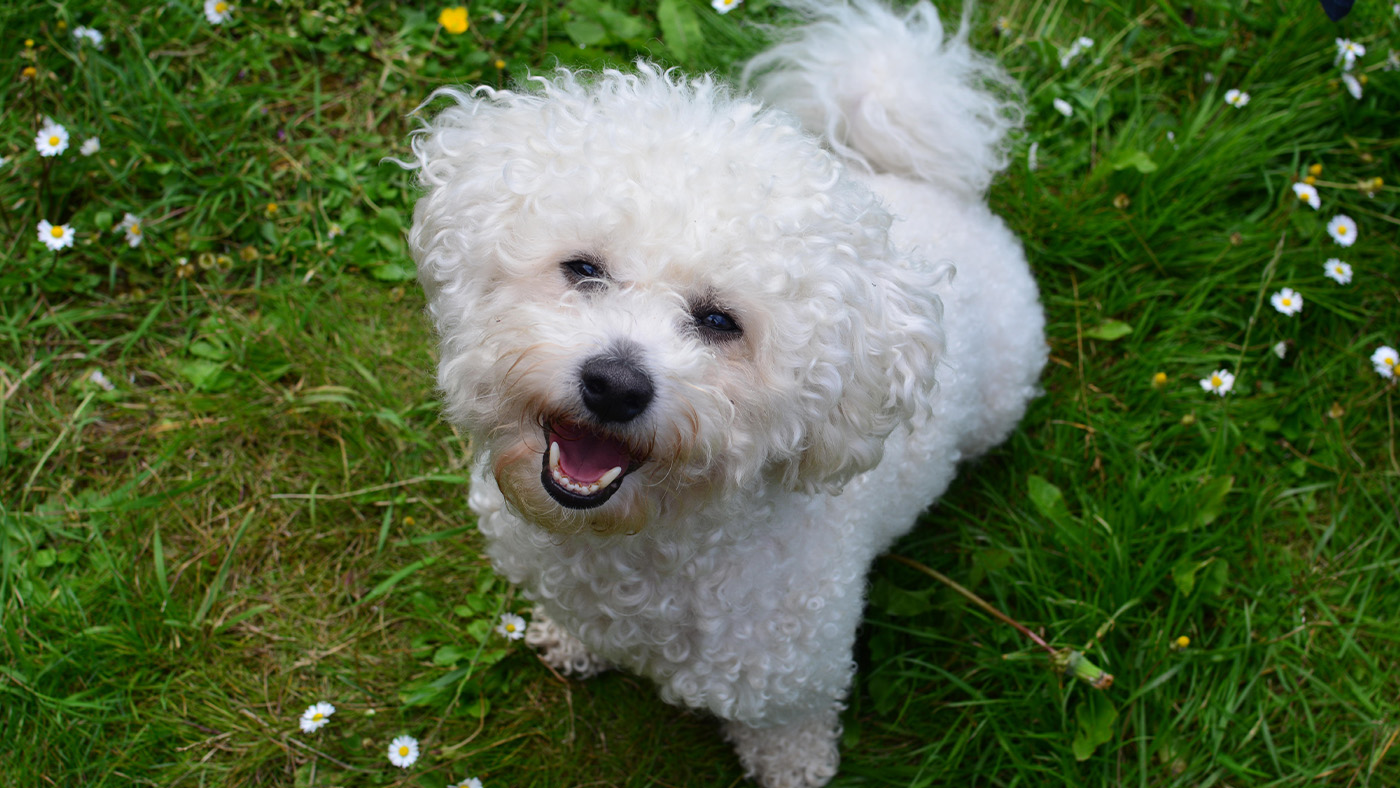
It’s easy to see why the cute little furry bichon frise is so popular as a therapy dog. They are cute and cuddly, and their long coats are very tactile to stroke.
They have outgoing yet gentle personalities and are naturally affectionate, which makes them an excellent comfort dog.
5. Cavalier King Charles
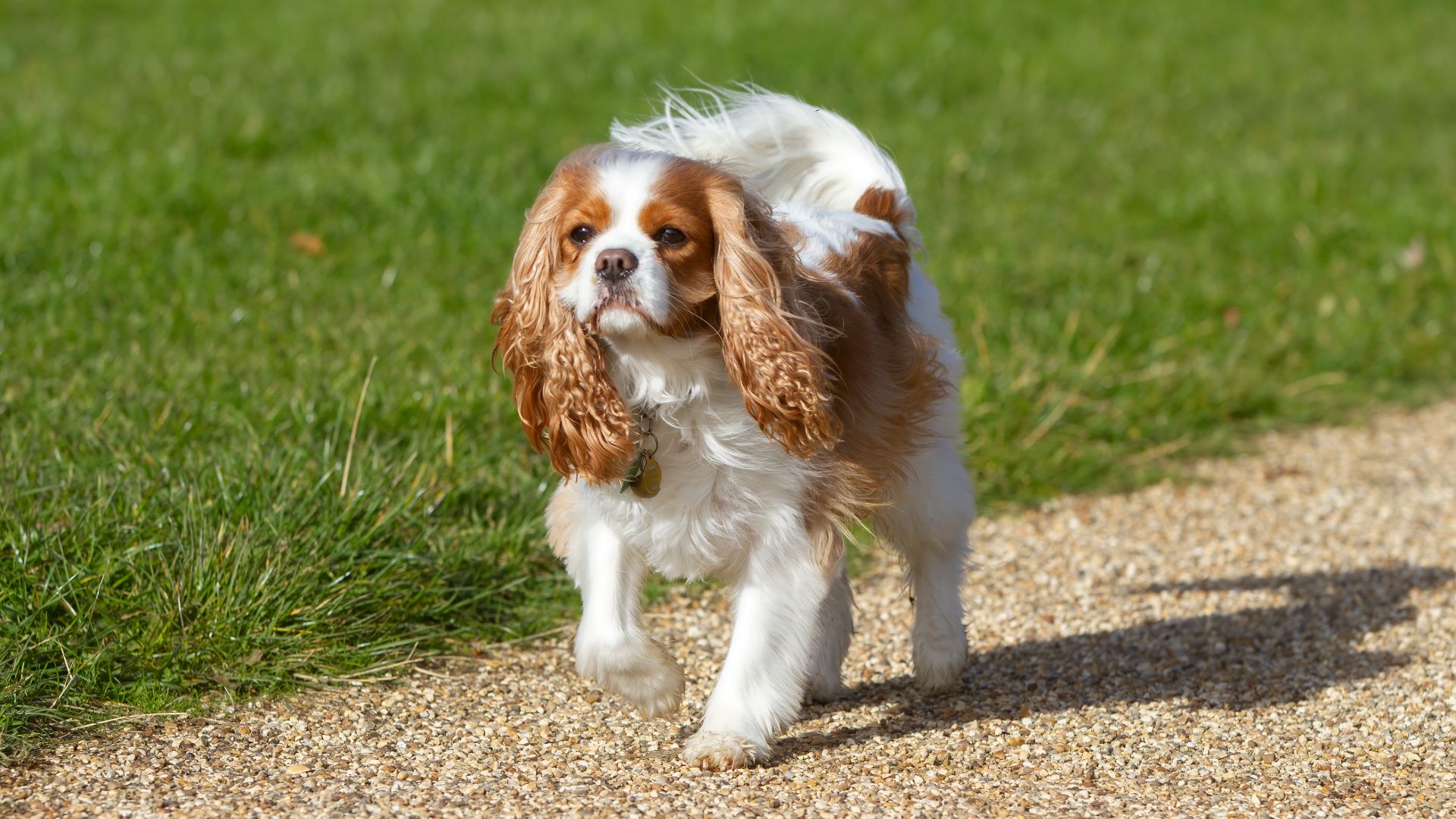
According to the American Kennel Club, the Cavalier King Charles Spaniel’s all-round beauty, regal grace and even temper “mark him as one of dogdom’s noblemen”, and we couldn’t agree more!
Cavaliers are innately friendly and accepting of human contact – in fact, they seek it out. They’re considered one of the best therapy dog breeds for their intelligence and trainability and, while always eager to be fussed, they are naturally calm and quiet.
6. Dachshund

Dachshunds may look cutely comical, but that long, low body and short legs hide a huge heart. Originally bred as badger hunting dogs in Germany, they’re naturally curious and affectionate which makes them great companions.
Though a more unusual choice of therapy dog, dachshunds are affectionate and gentle. Their small size means they are portable and easy to transport to homes, schools and hospices, too.
That said, they are scenthounds – this means they could easily be distracted by an interesting smell and they can have an independent streak.
7. Yorkshire Terrier

Yorkshire Terriers consistently make the most popular breeds list of the American Kennel Club, and they’re well liked for a reason. They pack a big personality into a tiny body, and the world’s first therapy dog is thought to be a Yorkie named Smoky who visited wounded soldiers in hospital in World War II.
Yorkies thrive in the company of humans and are small enough to visit bedbound patients. They are quiet and calm, and their non-threatening stature and presence gives them a reassuring and comforting energy. It’s important, though, that children understand not to play roughly with them.
8. Maltese
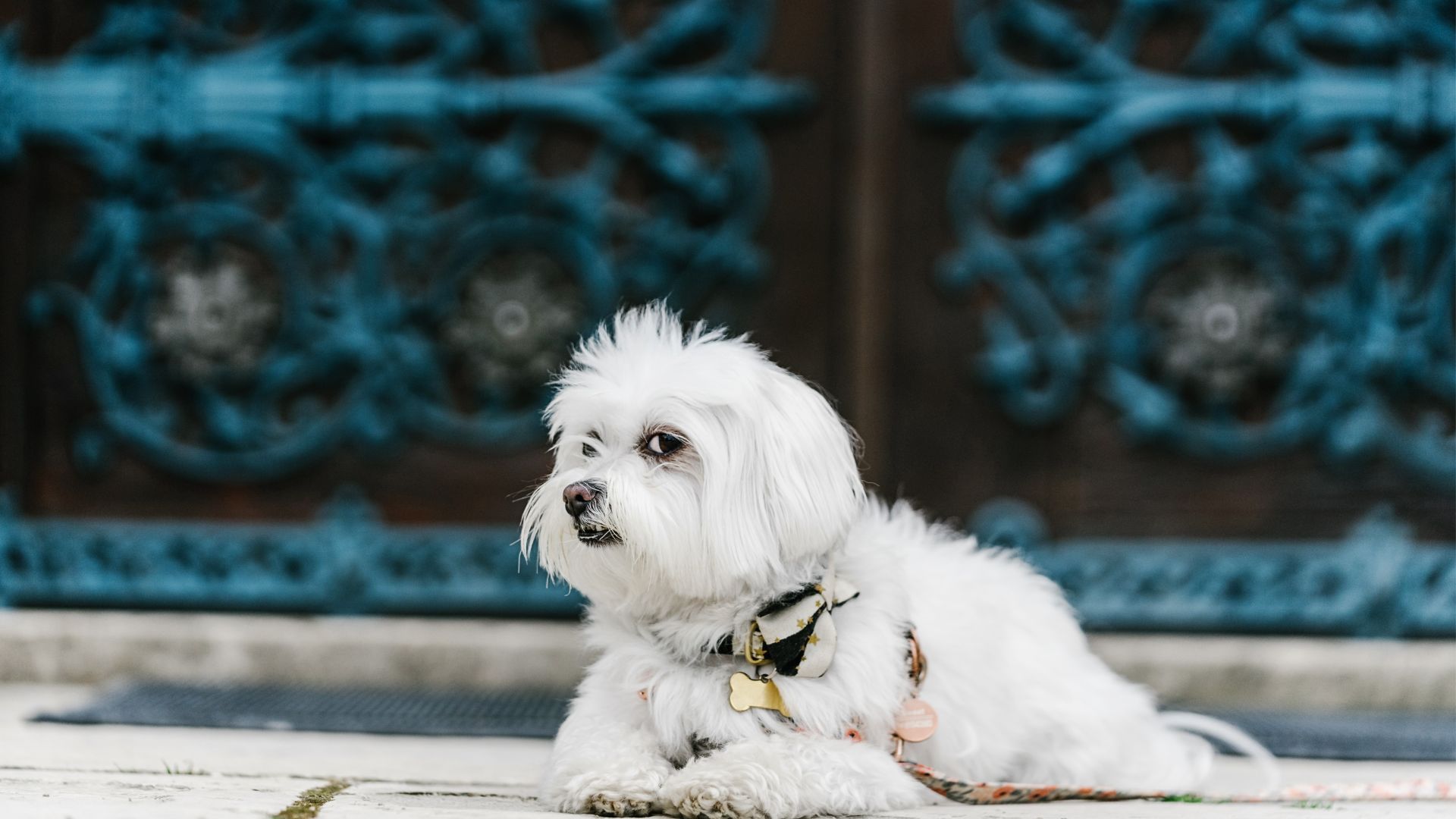
Thought to be one of the world’s oldest dog breeds, Maltese look like plush toys with their long coats and melting eyes – their inviting looks are coupled with a comforting and calming presence.
Gentle, calm and friendly, Maltese are another handy-sized small dog that is easy to transport.
9. Border Collie
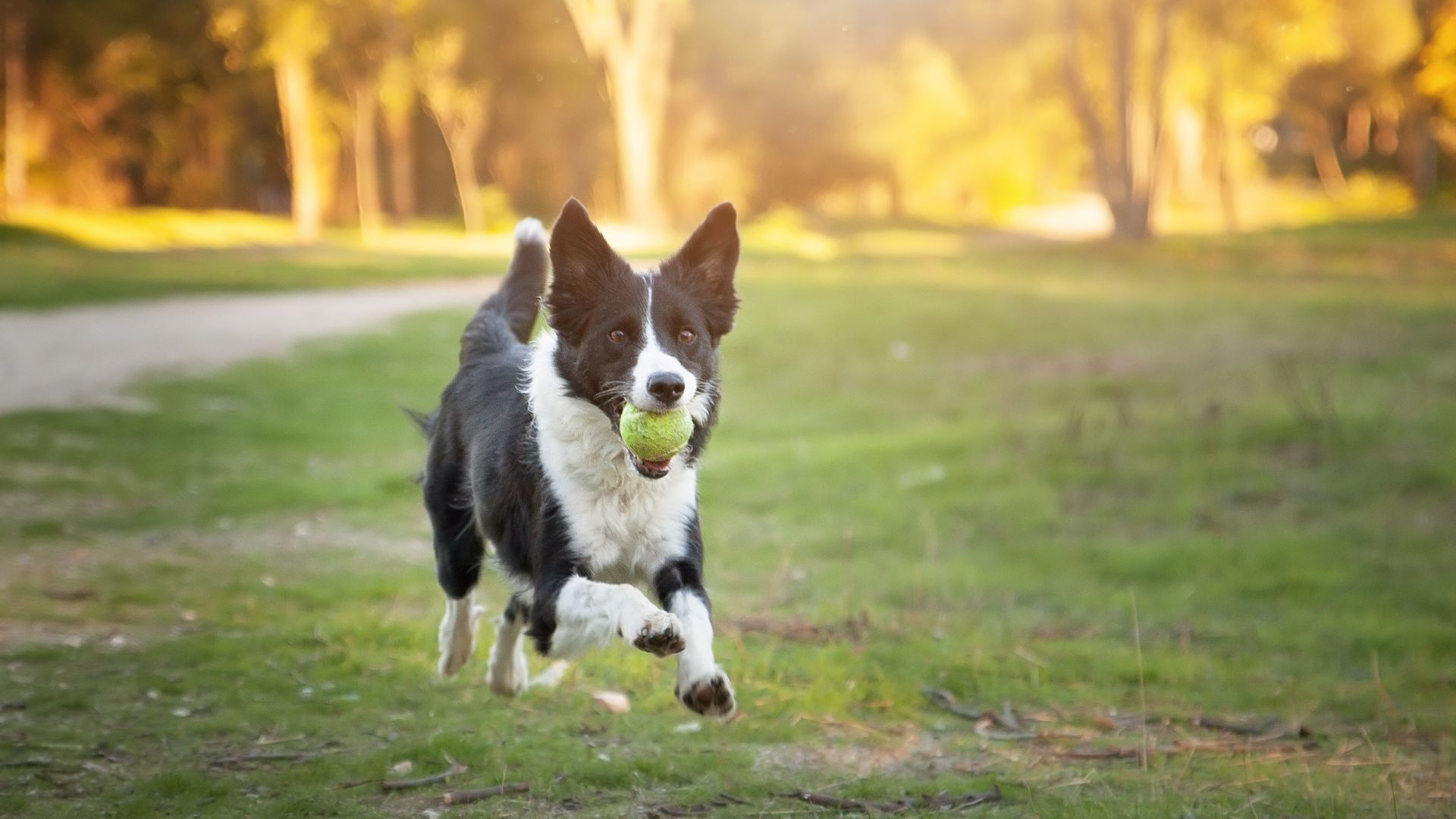
Border Collies are one of those breeds who can turn their paw to most things. They are hailed as the smartest breed in the world, and their high intelligence is coupled with extreme focus. When they are on task, there is no distracting them, meaning they devote themselves to their work; in a therapy dog’s case, the people who need them.
Friendly and loyal to their handlers, Collies work best in a one-to-one setting. It should also be noted that they have a punishingly high exercise requirement, which would need to be factored in alongside therapy work.
10. Pomeranian
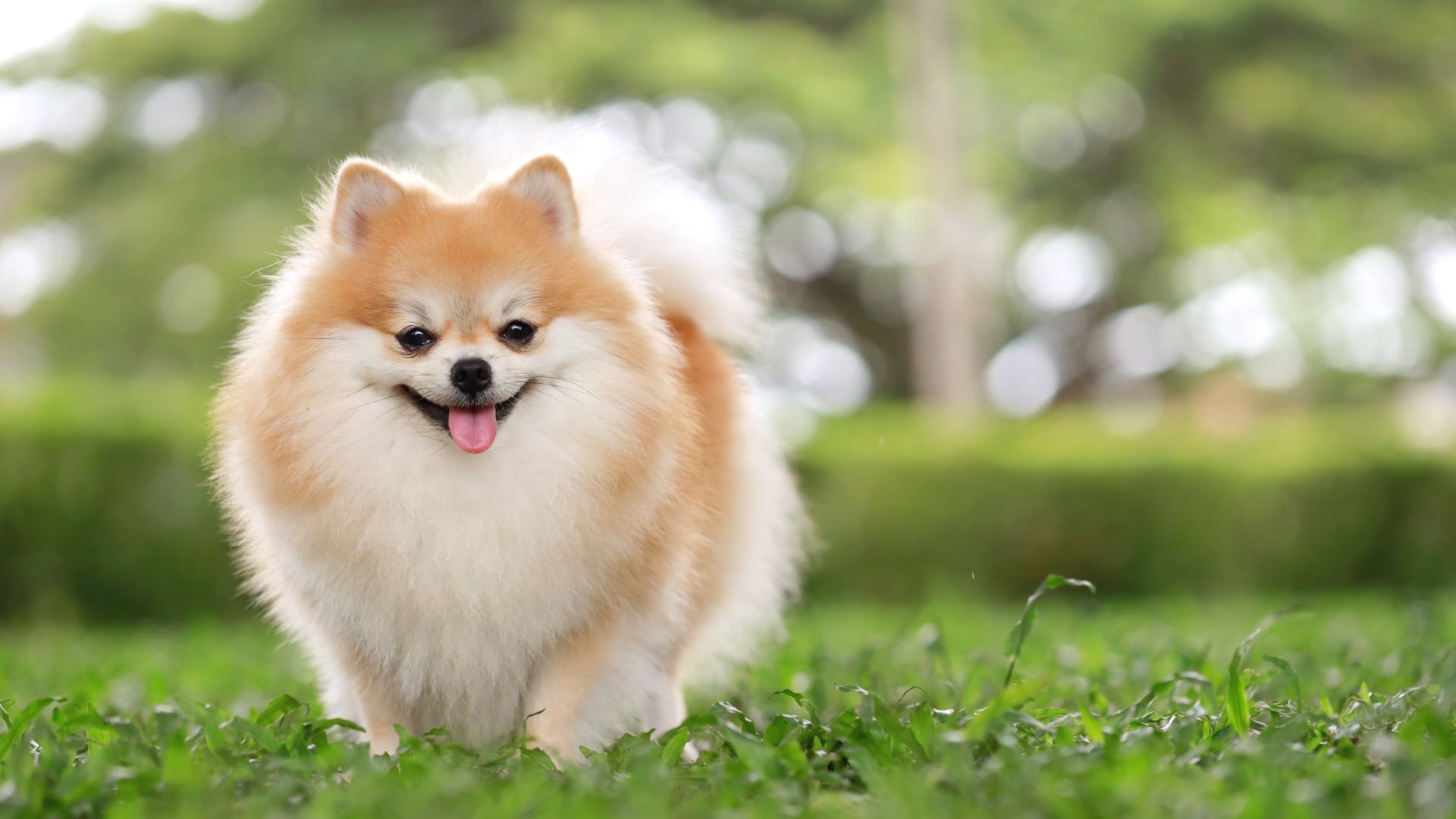
If fluff is your thing, then look no further than the Pomeranian. With an alert, foxy face and a joyful personality, Poms know just how to cheer people up.
They’re curious and love exploring new situations and although lively can be exercised with short walks or indoor play. They enjoy being fussed and sitting on laps, making them ideal comfort dogs.
11. German Shepherd

If you need a larger breed of dog to provide more physical support, then German Shepherds must be near the top of the list.
They’re highly intelligent and respond well to training, which is why they’re a top pick for many organizations, such as the police and homeland security. They are eager to please while being nartually inclined to work with their handlers and, like Border Collies, have fantastic focus.
12. Shih tzu

Their name may mean ‘little lion’, but there’s nothing fierce about these little charmers. Bred in China hundreds of years ago as companions, they’re happy living a mostly indoor life so are perfect if you lack much outdoor space.
A shih tzu’s idea of heaven is to sit on someone’s lap all day, so they’re welcome visitors to indoor spaces where residents aren’t very mobile. They’re outgoing, endlessly cheerful and love pretty much everyone. In fact, some would call them one of the best dogs for emotional support.
What's the difference between a service dog and a therapy dog?
The main difference between therapy dogs and service dogs is that there is currently no official set of regulations that certify therapy dogs.
“Service dogs must undergo rigorous training and assessments to achieve their status, whereas there is no federal certification for therapy dogs,” says companion animal vet Dr Rebecca MacMillan. “Different organizations will have their own training requirements for therapy dogs, but there is not one standardized qualification requirement.”
While emotional support and therapy dogs are canine companions that provide comfort and security to individuals who need it – from in the home to at sites such as schools and medical facilities – service dogs are not considered as pets.
“Service dogs have been highly trained to assist less able owners with very specialized tasks,” says Dr MacMillan. “For example, seeing eye dogs provide daily support to non-visual owners, hearing dogs alert their owner to sounds like the doorbell or telephone, or some dogs are even able to detect seizure events in epilepsy sufferers before they occur.”
As such, service dogs work with extremely vulnerable people and are trained to be able to perform their tasks without distraction.
“Service dogs also have greater public access rights than therapy dogs, or pet dogs,” adds Dr MacMillan. “They’re allowed to enter restaurants, shops, and airplanes, to continue assisting their owner at all times.”
How are therapy dogs are chosen and trained?
As we’ve explored in the list above, the best therapy dog breeds come in all shapes and sizes.
“They’re selected for a calm temperament and must enjoy being petted by a wide variety of unfamiliar people, while remaining calm and relaxed,” explains Dr MacMillan.
Therapy dogs also need to have a basic level of obedience and be familiar with medical equipment such as wheelchairs and other apparatus.
“If a dog meets these criteria, then it can undergo therapy dog certification,” confirms Dr MacMillan. “Unlike service dogs, this isn’t a legal requirement, but many schools, care homes and hospitals will still ask for this to check that the dog is a safe standard.”
While there is no federal certification for therapy dogs, many organizations offer their own training programs and assessments.
“These evaluate the dog’s temperament, social skills, and ability to handle unpredictable situations, as well as the handler's dog etiquette and ability to follow safety protocols.
“These dogs will still not have legal access to public spaces unless specifically invited as part of a therapy program.”
Edited by Georgia Guerin.







